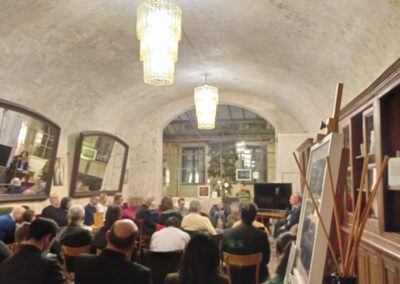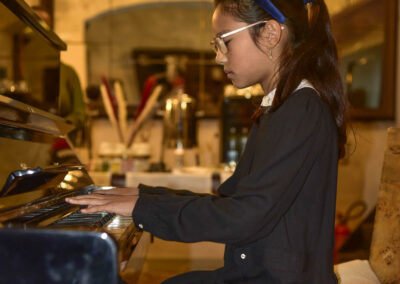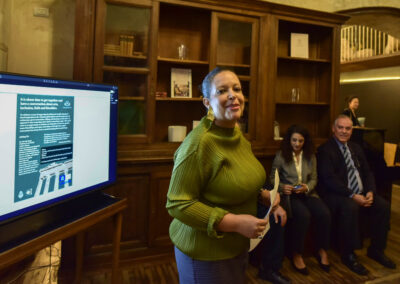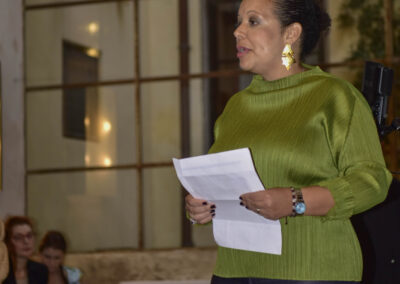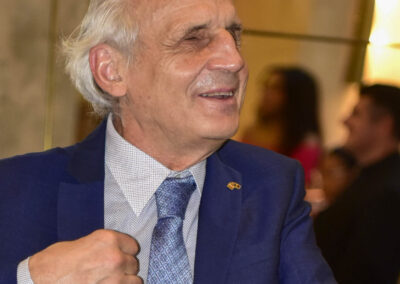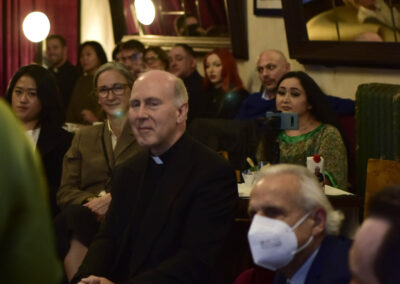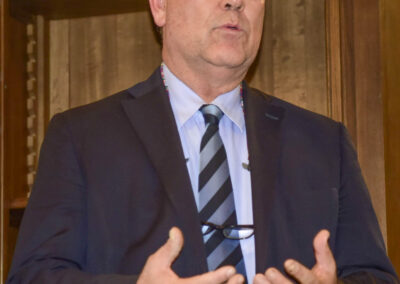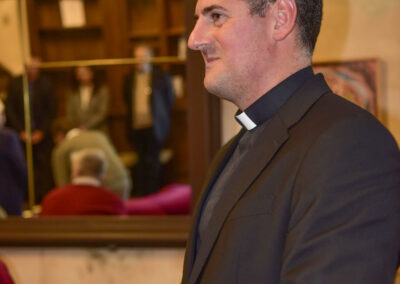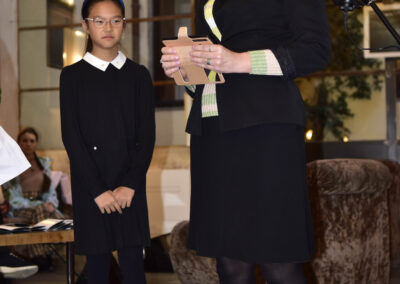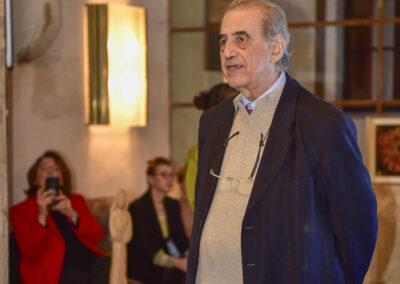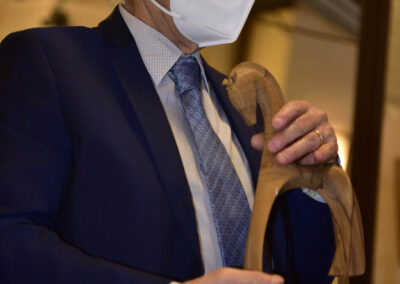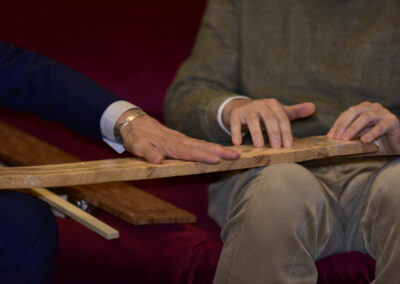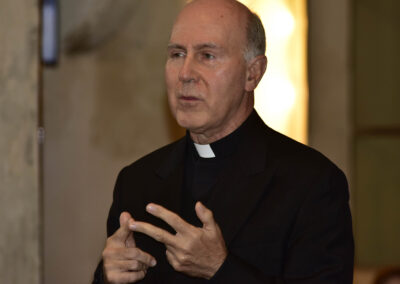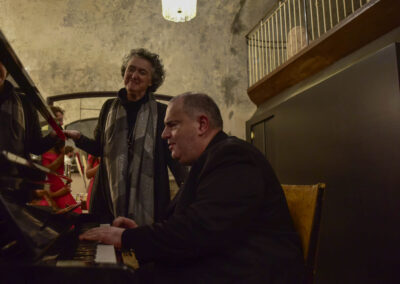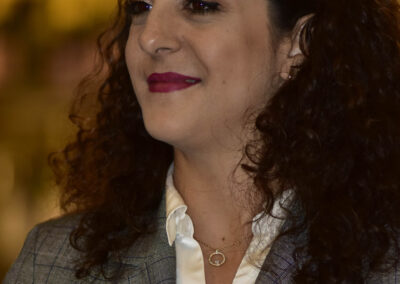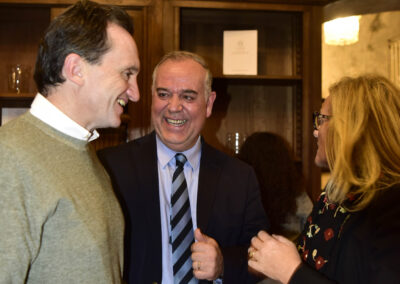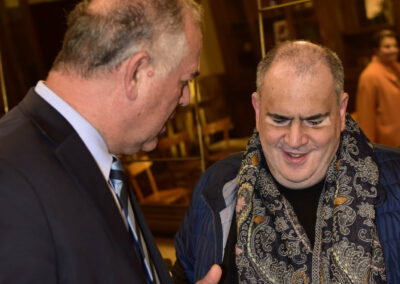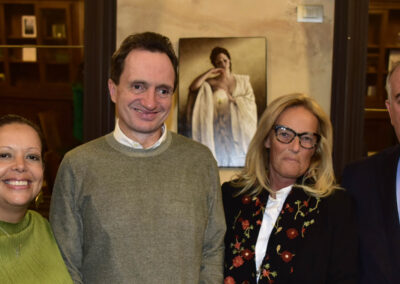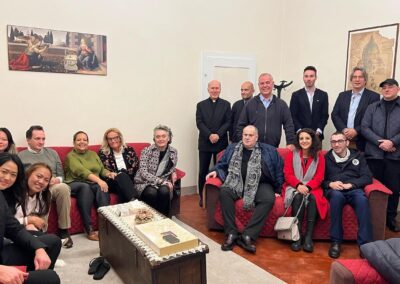A conversation about arts, inclusion, faith and bioethics.
By Serena Montefusco, UNESCO Chair in Bioethics and Human Rights
Upon the initiative of Dr Renata Santos Beman, who has been involved in raising awareness of the rights of the blind and visually impaired people for more than ten years, a meeting, or as the organizer called it, “A Conversation” on the topics of art, inclusion, faith and bioethics was held last Nov. 12 at Florence’s Palazzo San Niccolò, a vintage and welcoming venue from the 14th century.
“This small event is an opportunity to embrace our humanity to meet new people, create friendships and enjoy each other, as, through time, a good conversation has always been a crucial starting point towards hope. The idea is to challenge ourselves and our imagination on how we see the world and what we can do to transform it into a more inclusive place through arts, education, bioethics, or simple everyday conversations” – Dr Renata Santos Beman.
In an almost old-fashioned atmosphere, there were present The President of the Italian Union of the Blind and Visually Impaired & Florence Territorial Section, Dr Niccolò Zeppi, Professor Emeritus Luca Uzielli, Lecturer Emeritus in Wood Technology at the University of Florence, sculptor Andrea Bianco, pianist and writer Duccio Lamberti, Professor and Director of the Science and Faith Institute of the Pontifical Athenaeum Regina Apostolorum, Fr. Rafael Pascual, LC, and Prof. Alberto García Gómez, Dean of the Faculty of Bioethics and Director of the UNESCO Chair in Bioethics and Human Rights (Pontifical Athenaeum Regina Apostolorum and the European University of Rome).
After the opening greetings, a blessing by Fr. Daniel Mauricio, LC, followed by Dr Santos Beman’s reflection on her experience supporting the blind and other vulnerable groups, and how getting to know the reality of many blind and visually impaired, in particular, shifted her career. It contributed to her interdisciplinary ways of conducting research in the fields of science of behavior inspired by the work of BF Skinner towards arts, education, and the experience of faith, as seen in her recent work on meanings of relics beyond vision and the experience of vulnerability and the Shroud of Turin. Dr Santos Beman discussed that is still much more that can be done towards equity and social inclusion. Then, Dr Zeppi shared his experiences, as a blind person, as President of the Italian Union of the Blind and Visually Impaired in supporting and promoting autonomy, education, research and rehabilitation. Professor Natalia Parenko representing The International Saint Petersburg Art Academy in Firenze, introduced the piano performance by a talented young pianist Angela Chen with an outstanding performance that symbolized the start of the Conversation with the hope in the young generations.
Next, Prof. Uzielli presented some wood sculptures and plates highlighting how, through sight, touch and smell, it is possible to explore and learn about the world of wood. Interestingly, one of the participants, Prof. Paolo Pecile, that emphasized the importance of wood’s versatile properties through time for the development of society and technology; above all, he made a point of reflecting on the fact that history is told to us through the Iron Age, for example, and not “the age of the wood.”
After a moment of pause, Fr. Rafael Pascual, LC, introduced interdisciplinary perspectives in religion, mainly through studying the Shroud of Turin and how it has inspired many artists, including Mr Andrea Bianco. At the Regina Apostolorum Pontifical Athenaeum in Rome, Fr. Rafael Pascual, LC, in addition to coordinating the Master of Science and Faith, the Diploma in Shroud Studies, curates the Permanent Exhibition on the Holy Shroud – Who is the Man of the Shroud? The exhibition is a collection of images, objects, and sculptures that allow visitors to have a spiritual, historical and scientific experience where the mysteries of the sacred cloth where the figure of a man’s body with apparent signs of torture is imprinted are revealed.
The latest sculpture, “Ecce Homo according to the Shroud,” donated by Andrea Bianco himself on the occasion of the 15th Anniversary of the opening of the exhibition, is modelled on the Shroud’s Face. “There were numerous and dramatic details to be made on that Face. Starting with a swollen eye like a boxer’s, continuing with the stroke of the stick along the cheek, then that strip of torn beard and the trickle of blood on the forehead. But the most heinous thing for me was the helmet of thorns. At this point, I realized in fullness that the purpose was not to create a beautiful work, but rather a sculpture that would represent, as much as possible, the unspeakable pain of our God for the salvation of sinners.”- Mr. Andrea Bianco.
As we approach the end of this conversation among friends, M.B Dallocchio, an artist and social worker from Beverley Hills now living in Florence, introduced the born blind pianist Duccio Limberti that has an incredible history of achievements, graduated in languages in 1987, at the Martini Conservatory in Bologna he obtained the certificate of theory and solfeggio. Self-taught musician, arranger, singer, improviser author of 2 books. Duccio played national and international hits also accompanied by his wife, Lali Burduli, with whom he creates the LALIMBERTI Duo. The performance left everyone excited and with goosebumps, then Duccio Limberti and Prof. García (with the guitar) together improvised a Spanish piece, then leaving the floor to Prof. García to share the UNESCO Chair in Bioethics and Human Rights Bioethics and Global Art project, which through the different expressions of art wants to promote inclusion in respect of human rights and the importance of vulnerability in bioethics, as well as the arts as a form of education in the universal values and principles of the Universal Declaration Of Bioethics and Human Rights (2005). To conclude, Dr. Serena Montefusco Project Manager and Communication Officer of the UNESCO Chair, invited the participants to an aesthetic experience by showing some works from the International Bioethics and Art Competition that the UNESCO Chair realized as an expression of the project.
The conversation ended in the general enthusiasm of all participants who were able to appreciate the magic of meeting and sharing with each other, the magic of the presence of the Spirit that made it all possible.

